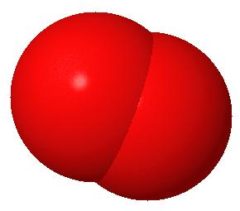Structure of Atoms
Hebrews 11:3
“By faith we understand that the worlds were framed by the word of God, so that the things which are seen were not made of things which are visible.”
 Let’s go back to the very first moment that the supposed Big Bang took place. Evolutionists say that at that very first moment, everything was up to chance. The size and charge of electrons, protons, the structure of atoms or whether they would even exist could have been anything.
Let’s go back to the very first moment that the supposed Big Bang took place. Evolutionists say that at that very first moment, everything was up to chance. The size and charge of electrons, protons, the structure of atoms or whether they would even exist could have been anything.
Now let’s move forward to what we actually know about the various atoms and their structure. Life as we know it is based on the carbon atom. Its structure makes it the only atom with almost unlimited ability to share pairs of electrons with other atoms. This makes possible the rich range of biological molecules needed for life. No other atom can do carbon’s job. The oxygen atom’s structure causes it to bind together in pairs. This type of bonding leaves unpaired electrons that allow oxygen to bind with iron. This feature makes hemoglobin capable of carrying oxygen in the blood. There are several other atoms that could replace iron in hemoglobin, but they would hold the oxygen either too tightly or too loosely. So there are no substitutes for iron. Likewise, the zinc atom is the only atom that can allow proteins to do the crucial job of identifying their own unique DNA sites.
The precise structure of atoms was clearly not the result of chance. Each was carefully designed by the Creator to support the life He would form only days after He made the atoms. Author: Paul A. Bartz
Prayer: I thank You, Lord, not just for the gift of life, but for eternal life, too. Amen.
Ref: Impact (ICR), 6/99, “Basic Chemistry: A Testament of Creation.”